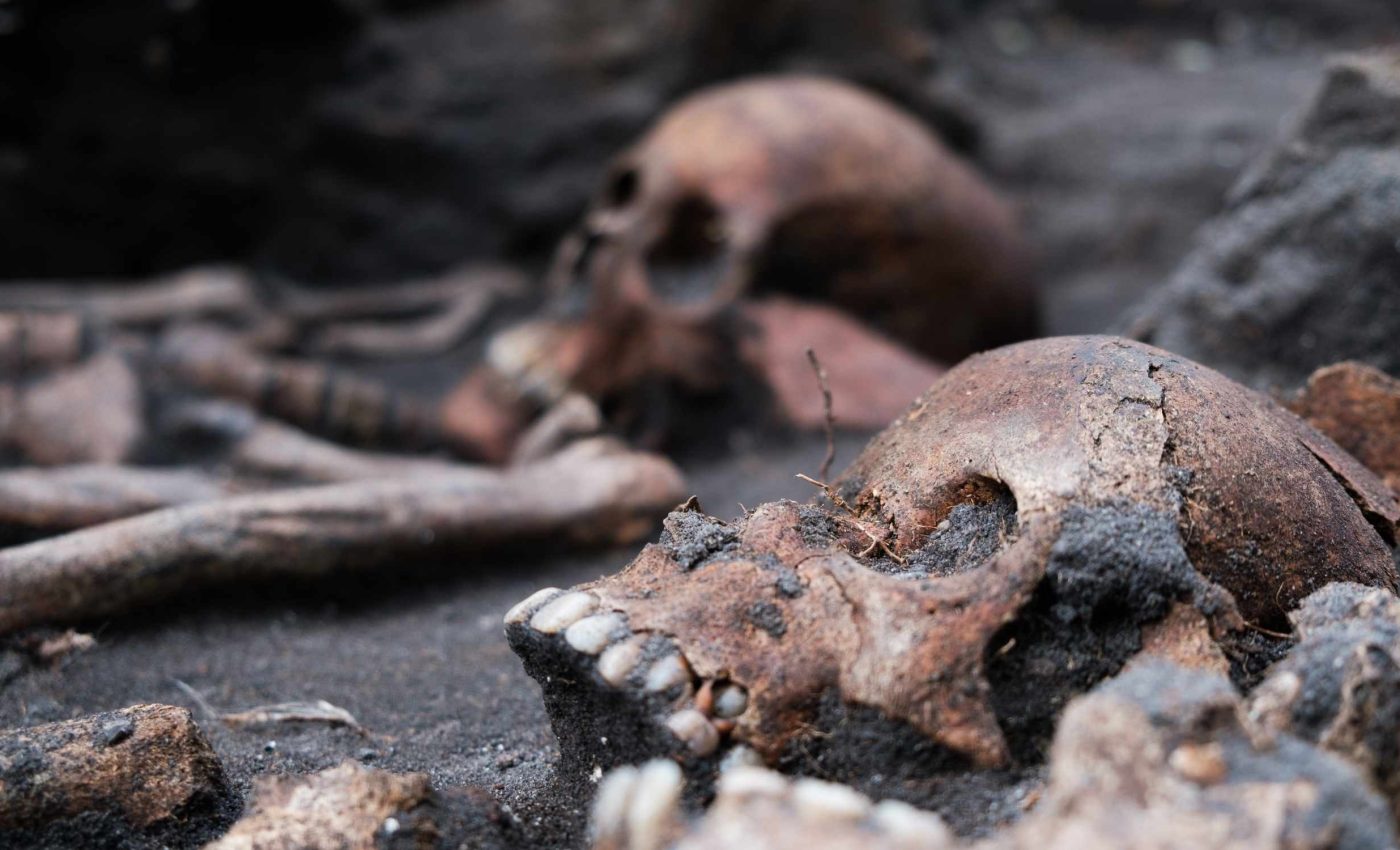
Cemetery with 77 Viking graves and hoards discovered
Archaeologists in Aarhus, Denmark, reported finding graves of 77 Viking in a medieval churchyard – a single site that captures a community shifting to Christianity while older beliefs lingered.
The graves cluster around the lost St. Oluf’s Church near the city center, and most date to roughly 900 years ago.
The work was led by Mads Ravn, archaeologist and head of Local Cultural Heritage at the Moesgaard Museum (MM). His work focuses on local cultural heritage and early medieval archaeology in Denmark.
The churchyard sits by the old shoreline and near the Viking Age town ramparts, placing the graves and cemetery at the threshold between the last years of Aros and the rise of a Christian town.
Bones, soil, and simple coffins record choices that mark a community’s changing identity.
Researchers said the small excavation window likely captures a cross section of townspeople rather than elites. That makes the site valuable for everyday history, not just royal chronicles.
Viking graves’ appearance
Archaeologists read belief through practice. A well known set of criteria, graves without personal goods and aligned west to east, comes from scholarship on early medieval Scandinavia and helps identify Christian customs in this period.
In Aarhus, the graves appear modest and close to the church’s footprint. That simplicity, paired with orientation, signals Christian rites rather than the richer burials of the late Viking Age.
Ravn said the rare skeletons give researchers a valuable chance to study the lives, illnesses, and beliefs of the first Aarhusians.
Local records note that the church’s choir collapsed on Shrove Sunday in 1548 during severe winds, and services shifted elsewhere.
The choir, the area of a church near the altar reserved for clergy, likely stood closest to the sea and suffered the worst erosion.
Burials continued in the churchyard long after the collapse, with the last interment recorded in 1813. The old cemetery eventually became a small public green in the city center.
From pagan to Christian
Denmark’s conversion was gradual, not overnight. An 11th century rune inscription on the Jelling Stone records King Harald Bluetooth’s claim that he made the Danes Christian, but everyday practices changed at different speeds in different places.
For a time, people could keep a foot in both worlds. Communities adopted church burial and prayers while holding on to older ideas about luck, protection, and healing.
What scientists will test next
The team plans radiocarbon dating, a method that estimates age by measuring carbon decay in once living tissue, to anchor grave ages and phases.
Results will help map whether clusters of burials group into family plots or waves of use over centuries.
Careful study of teeth and bone can reveal diet, stress, and infection. That evidence, paired with burial style, shows how belief and daily life moved together.
Early churchyards often drew burials from inside growing towns. That shift, from older pagan cemeteries outside settlements to Christian graves by a church, reflects how faith reorganized space and community ties within city walls.
In Aarhus, the pattern happened on a windy edge of town, connected to trade routes and royal roads. The site balances the intimacy of family grief with the sweep of political and religious change.
The find is a case study in how archaeologists test ideas about belief using patterns, not just objects. Orientation, location, and the near absence of grave goods, personal items buried with a body, become evidence that speaks to ritual and identity.
It also shows how written sources and soil talk to each other. A short chronicle entry about a church collapse becomes more meaningful when rows of east facing burials confirm centuries of use before the storm.
Lessons from Viking graves
Scholars use the term Christianization, the spread and adoption of Christian belief and practice in a region, to mark long transitions like this one. The St. Oluf’s graves fit the expected signs, and they do so in a place where pagan rites once held sway.
That tension is the heart of the story. People adapted, compromised, and then raised new generations who took the churchyard for granted.
Understanding a city’s first Christian cemetery helps modern Aarhus see how neighborhoods took shape and why certain streets, parks, and landmarks endure. Heritage is not just stone and turf, but living memory shared through research and public space.
Finds like this also remind us that change feels uneven when it happens. Faith and habit rarely switch overnight, but they leave firm tracks in how people bury their dead.
—–
Like what you read? Subscribe to our newsletter for engaging articles, exclusive content, and the latest updates.
Check us out on EarthSnap, a free app brought to you by Eric Ralls and Earth.com.
—–













